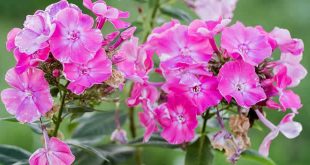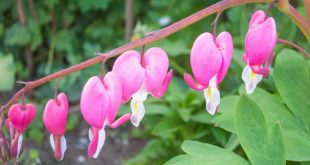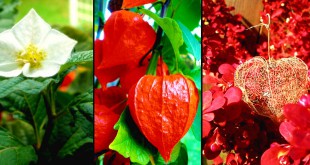 Iris — Iris is a genus of between 200-300 species of flowering plants with showy flowers which takes its name from the Greek word for a rainbow, referring to the wide variety of flower colors found among the many species. As well as being the scientific name, iris is also very widely used as a common name and refers to all Iris species as well as some closely related genera. It is the state flower of Tennessee.
Iris — Iris is a genus of between 200-300 species of flowering plants with showy flowers which takes its name from the Greek word for a rainbow, referring to the wide variety of flower colors found among the many species. As well as being the scientific name, iris is also very widely used as a common name and refers to all Iris species as well as some closely related genera. It is the state flower of Tennessee.
The genus is widely distributed throughout the north temperate zone. Their habitats are considerably varied, ranging from cold regions into the grassy slopes, meadowlands, stream banks of Europe, the Middle East and northern Africa, Asia and across North America.
They are perennial herbs, growing from creeping rhizomes (rhizomatous irises), or, in drier climates, from bulbs (bulbous irises). They have long, erect, flowering stems, which may be simple or branched, solid or hollow, and flattened or have a circular cross-section. The rhizomatous species usually have 3-10 basal, sword-shaped leaves growing in dense clumps. The bulbous species have cylindrical basal leaves.
The inflorescences are fan-shaped and contain one or more symmetrical, six-lobed flowers. These grow on a pedicel or lack a footstalk. The three sepals, which are spreading or droop downwards, are referred to as falls. They expand from their narrow base into a broader limb (= expanded portion), often adorned with veining, lines or dots. The three, sometimes reduced, petals stand upright, partly behind the sepal bases. They are called standards. Some smaller iris species have all six lobes pointing straight outwards. The sepals and the petals differ from each other. They are united at their base into a floral tube that lies above the ovary. The styles divide towards the apex into petaloid branches (see pollination, below).
The iris flower is of special interest as an example of the relation between flowering plants and pollinating insects. The shape of the flower and the position of the pollen-receiving and stigmatic surfaces on the outer petals form a landing-stage for a flying insect, which in probing the perianth for nectar, will first come in contact of perianth, three with the stigmatic stamens in one whorl surface which is borne and an ovary formed of three carpels. The shelf-like transverse projection on the inner whorl under side of the stamens, which is beneath the over-arching style arm below the stigma, so that the insect comes in contact with its pollen-covered surface only after passing the stigma, while in backing out of the flower it will come in contact only with the non-receptive lower face of the stigma. Thus, an insect bearing pollen from one flower, will in entering a second, deposit the pollen on the stigma, while in backing out of a flower, the pollen which it bears will not be rubbed off on the stigma of the same flower.
 Kids Portal For Parents India Kids Network
Kids Portal For Parents India Kids Network




